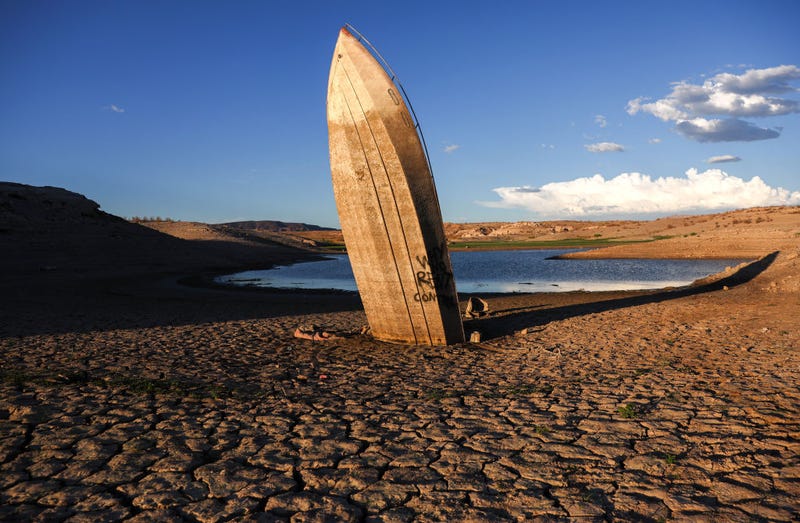
As climate change continues to throw a wrench into normal weather patterns, creating extreme heat that has caused droughts, the melting of the glaciers, and other disasters, numerous never-before-seen wreckages, villages, and more are being discovered.
Underwater mysteries
Discoveries have continued to pop up across the globe as low to minimal rainfall reveals never-before-seen wreckages.
In Italy, the nation’s longest river, the River Po, has hit its lowest level in nearly 70 years, revealing a World War II-era wreckage.
The wreckage has been identified as German tank and cargo ships and gives a glimpse into the past, thanks to little rain and melting snow in the Alps, Bloomberg reported.
But that isn’t the only thing discovered in Italy. In Rome, the drought has revealed more of the east pile of Pons Neroianus or the bridge of Nero. The bridge, named after an ancient emperor, is said to have been built during Nero’s reign and would make it nearly 2000 years old.
While the extreme heat in Italy has allowed archaeologists to get a glimpse into the past, it has left the nation’s government working to find solutions, declaring a state of emergency due to the dry conditions, Reuters reported.
Across the pond in the U.S., drought has hit the western part of the country, and in return left several vital reservoirs at or near historic lows, including Lake Powell and Lake Mead.
The latter has left a pile of work for coroners and local authorities who have discovered at least four sets of human remains in the lake as water levels continue to drop.
But that’s not all. Drought caused by low snowmelt has resulted in the discovery of sunken boats, jet skis, ski masks, and more.
Beyond the drought, some have started to question whether or not there could be mob involvement tied to the bodies discovered in Lake Mead, which feeds into the Hoover Dam.
However, Las Vegas Metropolitan Police Department Lt. Jason Johansson told CNN earlier this month that was only “speculation.”
In Spain, near the border of Portugal, the Aceredo village has resurfaced after being flooded 30 years ago to fill the Alto Lindoso reservoir. But now the small town has been re-exposed, resulting in tourists exploring the village frozen in time.
Frozen in time
Hunting relics discovered in the mountains of Norway were uncovered due to the continued melt of high mountain ice, according to archaeologist Lars Pilø.
He shared with Bloomberg that he and his team at the Glacier Archaeology Program discovered a woolen tunic from the Iron Age, a Roman-style shoe, and a well-preserved arrow from 300 to 600 years ago.
Pilø said that “We are melting back in time, as the ice retreats.”
Ice melting has allowed for discoveries in the sea to be possible as well, including the discovery earlier this year of Ernest Shackleton’s vessel, The Endurance.
Due to record low Antarctic sea ice, the ship was discovered, solving one of the biggest unsolved maritime mysteries. In 1914, the ship Endurance departed from London, England, with Shackleton at the helm and one mission: exploring Antarctica.
However, the expedition was cut short when the ship eventually sank just a year later, never making it to Antarctica. Since then, it spent over a century in the depths of the Weddell Sea, and because of this, the vessel remained in somewhat good condition, according to National Geographic.
With climate change continuing to reduce the size of glaciers, the levels of lakes and rivers, and causing wildfires across the globe, a glimpse into the past is becoming more and more common.
LISTEN on the Audacy App
Sign up and follow Audacy
Facebook | Twitter | Instagram
